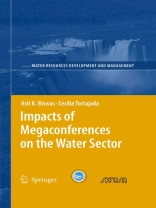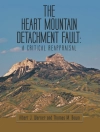Since the late 1990s, megaconferences in the water-related sectors have become regular occurrences. The latest one, in Mexico City, in March 2006, is estimated to have cost a total of $205 million, and had 19, 000+ participants. In spite of such huge costs and organizational efforts, not a single water megaconference has ever been seriously evaluated in terms of its overall impacts on the water sector. This book is the first pioneering study to assess the impacts of the megaconferences on water policies, programs and projects at global, regional and national levels. The results are bleak. The evaluation indicated that except for the UN Water Conference, held in Argentina in 1977, the impacts of the subsequent megaconferences have been at best marginal in terms of knowledge generation and application, poverty alleviation, environmental conservation and /or increasing availability of investments funds for the water sector.
Spis treści
PART I: Global Considerations.- 1. Impacts of Large Dams: Issues, Opportunities and Constraints.- 2. Indirect Economic Impacts of Dams.- 3. Resettlement Outcomes of Large Dams.- 4. Greenhouse Gas Emissions from Reservoirs.- PART II: Case Studies.- 5. Impacts of Dams in Switzerland.- 6. Dams and Resettlement in Argentina.- 7. Impacts of Sobradinho Dam, Brazil.- 8. The Atatürk Dam and the Southeastern Anatolia (GAP) Project, Turkey.- 9. Impacts of King River Power Development, Australia.- 10. Resettlement in China.- 11. Large Dams that Command Beijing’s Heights.- 12. Resettlement due to Sardar Sarovar Dam, India.- 13. Impacts of Kangsabati Project, India.- 14. Regional and National Impacts of Bhakra-Nangal Project, India.- 15. Impacts of Koyna Dam, India.- 16. Resettlement and Rehabilitation: Lesson from India.- 17. Impacts of High Aswan Dam, Egypt.- Index












